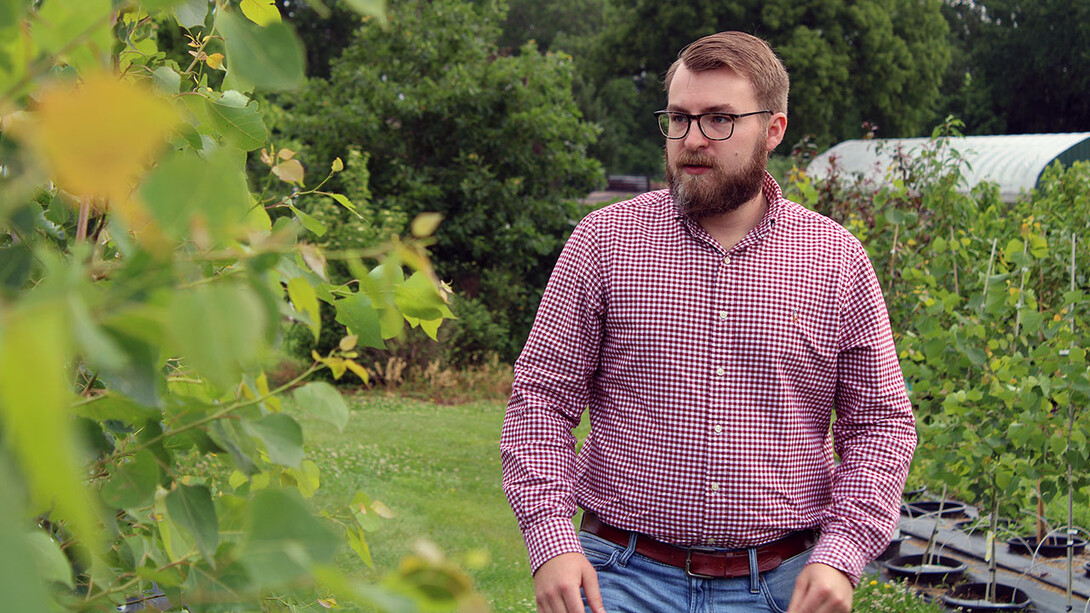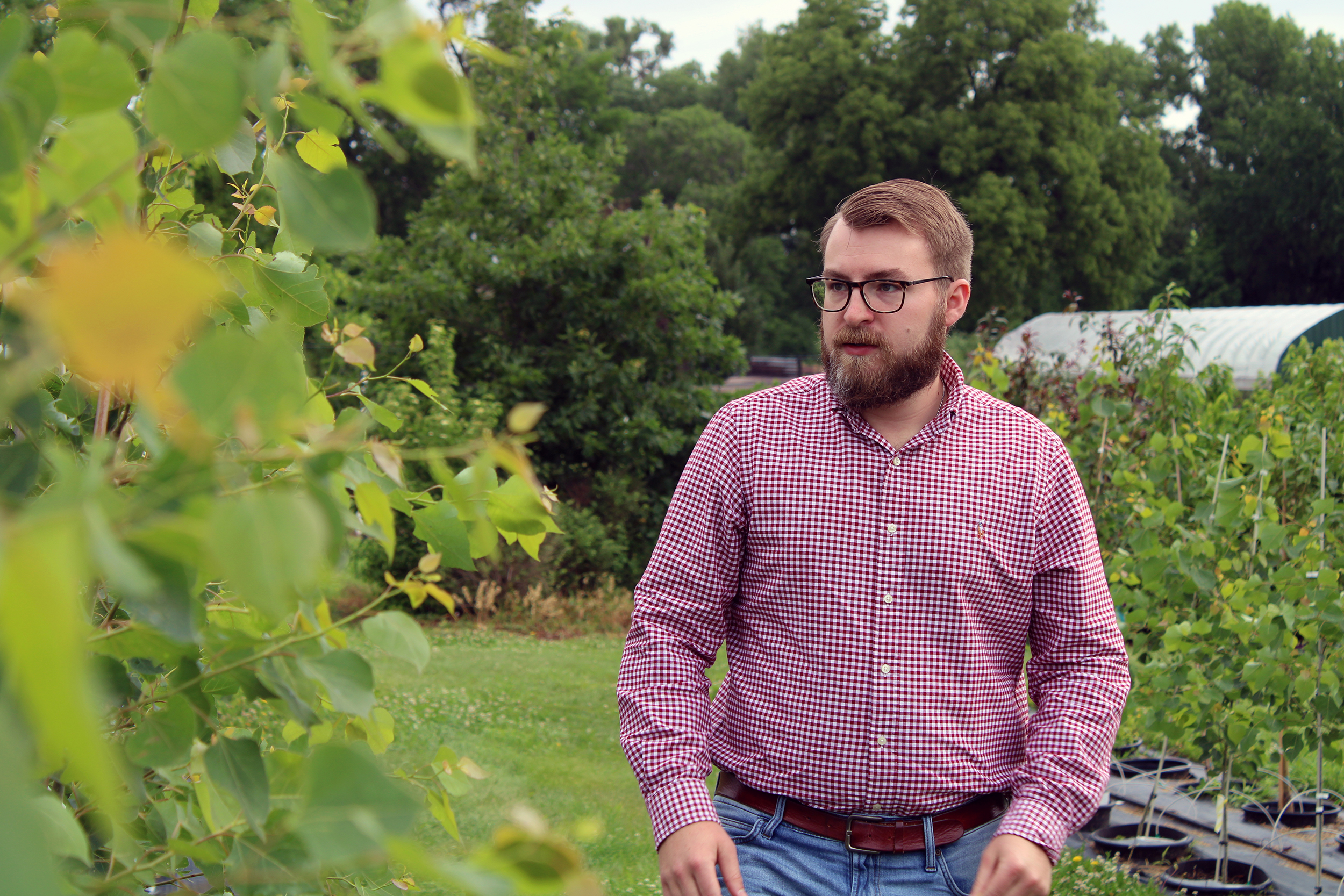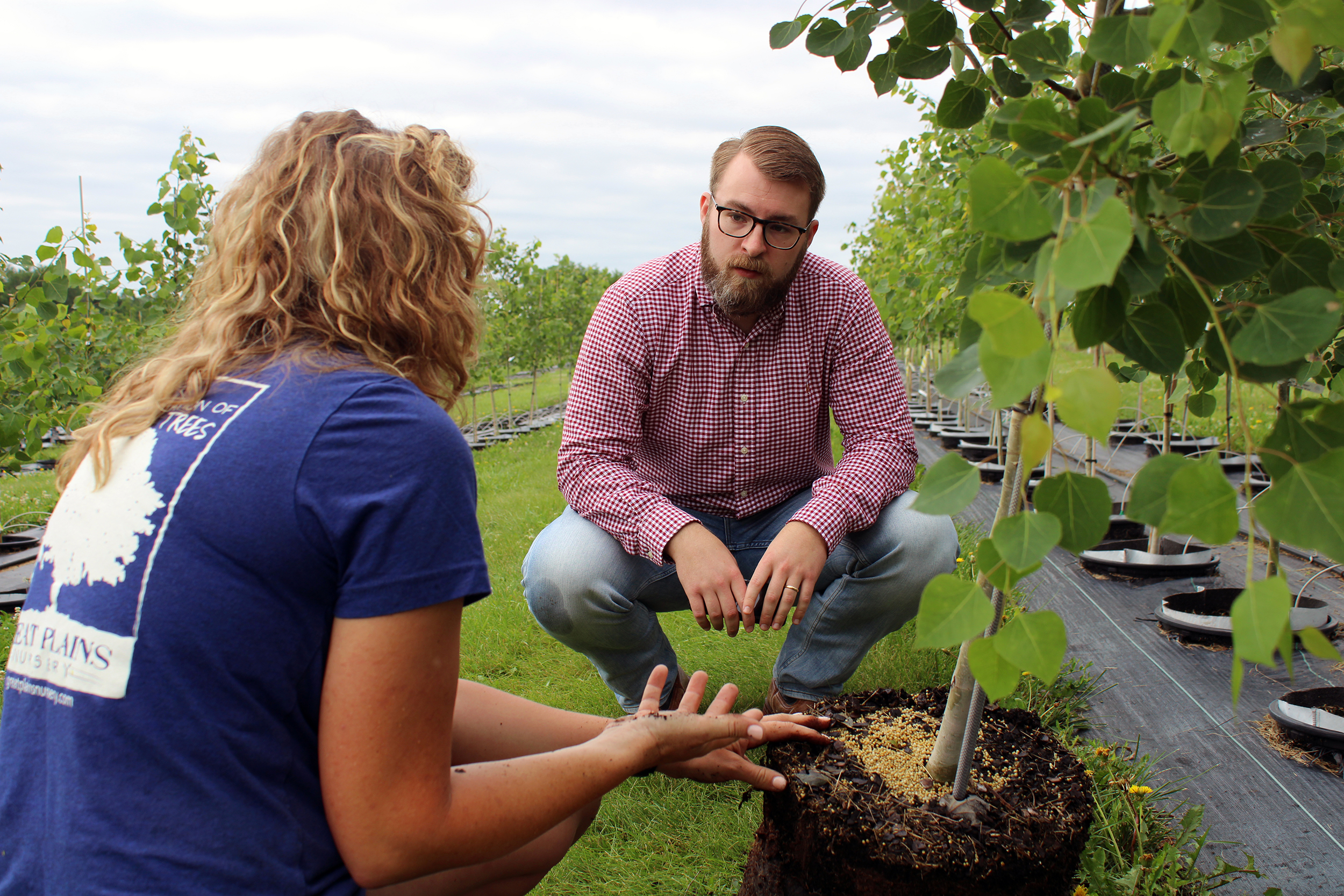
Valentine’s Main Street looks a little different lately. In summer 2019, the Nebraska Department of Transportation began repaving Highway 83, which runs through Valentine’s business district, and the Sandhills city got to work revitalizing its downtown streetscape. From revamping parking to installing greenspace, the town of 2,700 is creating a place where visitors feel welcome and residents feel at home. And it’s all been aided by a University of Nebraska–Lincoln alumnus.
Austin Arens is a Kearney native who earned a bachelor’s degree in landscape architecture in 2020.
“I have a love of the outdoors and a love of designing things,” he said. “Landscape architects design the outdoor environment. That’s how I got into this.”
During his junior year, Arens took a course from Kim Wilson, professor of architecture and extension educator with Rural Prosperity Nebraska. The curriculum focused on landscape design in rural communities. Wilson and a research team had been working with Valentine on a master plan, and the course Arens took centered on the downtown redesign.
“A lot of classes were, yes, helping students learn, but also fostering a sense of service learning,” Arens said. “Valentine was definitely the most impactful and involved design experience I had at UNL.”
As a class, the students collaborated and proposed projects ranging from the practical (installing pedestrian-friendly sidewalks and benches), to the environmental (planting trees and redesigning the greenspace along Highway 20 leading into town), to the logistical (remodeling storefronts and redesigning traffic flow on Main Street).
“When we were able to connect with that class,” said Kyle Arganbright, president of Valentine’s city council, “it brought kids from all over the country, and it exposed them to a rural part of Nebraska that they might not have understood. But for us, it also brought a lot of different ideas that we otherwise might not have had. The students gave their best.”
Valentine’s community leaders and economic developer were so pleased with the students’ designs that during the following summer, they asked Arens to consult on the project’s progress.
“Austin’s been part of this conversation since day one,” Arganbright said. “He took an interest in Valentine, and we had good rapport. As a landscape architect, the value he provided was basically how to create a cohesive plan that’s natural to the area and low-maintenance.”
“The classmates I worked with set a solid foundation and good design principles,” Arens said. “I had the time and availability, so it was just kind of me helping to carry the torch.”
After graduation, Arens worked at an architectural firm in Florida but returned to Nebraska after a year-and-a-half to be closer to family. Now, as a landscape architect in training at RDG Planning and Design in Omaha, Arens works with communities on downtown revitalization. In the world of urban design, landscape architecture spans the spectrum, he said.
“You have landscape designers, who may work at a nursery, help you pick out plants for your home,” he said. “Then you have large-scale folks who are doing city planning. Landscape architects sit in the middle. We have a knowledge of plants and trees, and also how to design for the environment.”
Designing for the environment, combining community design and conservation, is a challenge Arens thrives on and the balance he aims for as he continues work in Valentine.
“Valentine’s really unique from an ecosystem perspective,” Arganbright said. “Because of the Niobrara River, there are six different ecosystems that meet there. So there are plants that live here that don’t live anywhere else in the world. Austin found that as a cool opportunity and a cool challenge — to bring elements of the Niobrara and the Sandhills to downtown Valentine.”
“As soon as you turn north into downtown, we wanted something that would get people to slow down their car and say, ‘Wow!’” Arens said. “We also worked with a lighting designer to put in a new sequence of light poles that were dark-sky compliant (lights that are warmer in color and shielded so the light projects downward), which is a huge thing in the Sandhills. It’s one of the darkest areas in the United States.”
Arens said he is grateful to have played a role in Valentine’s progress. His and his classmates’ contributions haven’t gone unnoticed.
“I just want to emphasize how valuable a university connection is,” Arganbright said. “Getting those students off those campuses and seeing the rest of Nebraska, helping move Nebraska forward through their talents and time, and engaging them in a community 300 miles away is pretty awesome.”
Arens will be in Valentine later this year to plant trees down Main Street. What drives his passion for landscape architecture, he said, is his desire to serve Nebraska.
“It’s important to be involved in your community,” he said. “There have been so many people who came before you to help you get to the position you’re in, so now it’s your time to serve on the city board, volunteer your time, do things outside of normal work hours and put in a little extra effort to make Nebraska a better place for everybody. Landscape architecture and landscape architects are positioned to help guide that process for cities.”









